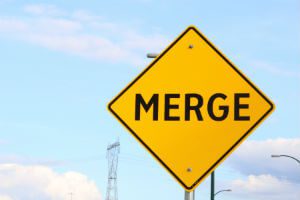Who Could be Held Liable for Merging Crashes in Minnesota?
 Merging with other traffic can be dangerous, particularly when you are entering a highway and other vehicles are traveling at high speed. A slow-moving vehicle colliding with a fast-moving vehicle is a recipe for severe injuries.
Merging with other traffic can be dangerous, particularly when you are entering a highway and other vehicles are traveling at high speed. A slow-moving vehicle colliding with a fast-moving vehicle is a recipe for severe injuries.
Below, learn more about merging and fault for these accidents.
General Rules on Merging
There are certain steps drivers can take to avoid a crash when merging or when you are approaching a vehicle attempting to merge in front of you. Here are some general rules on this traffic maneuver that could help keep you safe:
- Merge your vehicle gradually into oncoming traffic. This prevents other drivers from thinking you are going to cut them off and it keeps other vehicles at a safe distance.
- Drive at a safe distance. When you are already on the highway, be sure to keep a safe distance between your vehicle and the vehicle in front of you. This provides space for merging vehicles to maneuver when entering the highway.
- Use your turn signal. Even though you might assume other drivers know you are merging onto the highway, you should still use your turn signal.
- Switch your lane of travel. If you are already traveling on the highway you should switch your lane of travel when approaching an entrance ramp. This allows merging vehicles more space to merge.
- Do not stop in the merging lane. This is incredibly dangerous. You should only stop if it is absolutely necessary. Otherwise, simply slow down to give yourself more time to merge.
Even if you follow these rules, other drivers may not, particularly if they are distracted.
Fault in Different Scenarios
When it comes to determining fault in a merging crash, it is often the driver of the merging vehicle who is held liable for the crash.
Why? In most instances, the merging driver is at fault for failing to yield the right of way to traffic already on the highway.
There are other circumstances where the merging vehicle might not be held liable for the crash. One such scenario is if a vehicle already on the highway erratically enters the merging lane and strikes the merging vehicle before it even enters the highway.
Zipper Merging
Zipper merging has become a popular merging method on the highways of Minnesota and across the country. Zipper merging is a change from the norm of early merging, which often leads to more crashes and longer backups.
A zipper merge asks drivers to remain in the lane that is ending or closing until they get to the point where the merge occurs. The drivers are then expected to take turns letting vehicles into the lane that is still open.
A zipper merge provides the following benefits to drivers:
- Reduces the difference in speeds between any two lanes of traffic
- Reduces the occurrence of road rage
- Reduces the overall length of a traffic backup
- Reduces congestion at interchanges on freeways
- Creates an idea of fairness as drivers see that all lanes are moving at the same speed
Reasons Merging Crashes Happen and How to Avoid Them
The most common reasons why merging crashes happen include the following:
- A driver makes a lane change without using his or her turn signal
- A driver merges onto the highway by going too slow or too fast
- A driver merges onto a highway and crosses over multiple lanes
- A driver merges by cutting off other drivers
- A driver is distracted while merging or while driving near an on-ramp
- A driver is under the influence of drugs or alcohol
- A driver fails to move to an adjacent lane away from the on-ramp
Injured in a Merging Crash? Call TSR Injury Law Today
Have you or a loved one suffered an injury in a merging crash?
It can be challenging to determine fault in such a crash, especially if you were the merging driver.
Consult with an experienced Bloomington car accident lawyer from TSR Injury Law about your claim.
Call us at (612) TSR-TIME to schedule a consultation.


 Attorneys
Attorneys  Last spring, our firm sponsored Cedar Ridge Elementary School for The Sheridan Story program, which provides nourishing weekend meals to children and families who do not have reliable access to food.
Last spring, our firm sponsored Cedar Ridge Elementary School for The Sheridan Story program, which provides nourishing weekend meals to children and families who do not have reliable access to food. Many car crash victims do not know the dangers of providing too much information to an insurance company after an accident. They may think they need to talk to the insurance company to get things resolved. They may also be desperate for compensation because of mounting medical bills, wage loss or property damage.
Many car crash victims do not know the dangers of providing too much information to an insurance company after an accident. They may think they need to talk to the insurance company to get things resolved. They may also be desperate for compensation because of mounting medical bills, wage loss or property damage. Our firm recently represented the victim of a crash caused by a driver who ran a red light. The impact caused the victim’s spine to be whipped back and forth, ripping a disc and causing significant pain. Unfortunately, this injury became chronic.
Our firm recently represented the victim of a crash caused by a driver who ran a red light. The impact caused the victim’s spine to be whipped back and forth, ripping a disc and causing significant pain. Unfortunately, this injury became chronic. If you were injured in a car crash in Minnesota, you can pursue compensation from your own car insurance. What happens if you were a passenger in the accident?
If you were injured in a car crash in Minnesota, you can pursue compensation from your own car insurance. What happens if you were a passenger in the accident? Some car crash victims may assume they are unable to file a claim because they were not wearing a seat belt at the time of the collision. The problem is, the issue can be a lot more complicated than that.
Some car crash victims may assume they are unable to file a claim because they were not wearing a seat belt at the time of the collision. The problem is, the issue can be a lot more complicated than that.